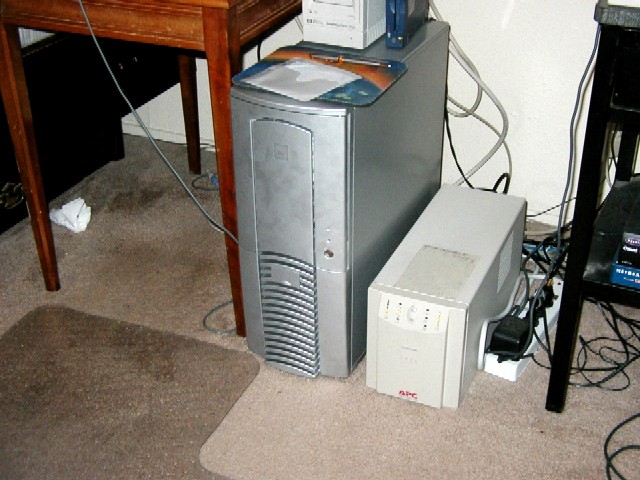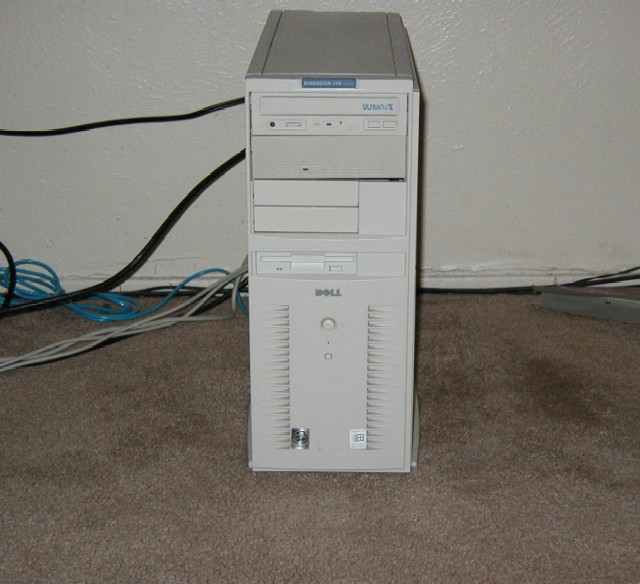|
For experimentation and general hacking/horsing around, I rescued Shiva
from a life of crime!
(satellite signal piracy, if you must know, and no, I was not the pirate
so please don't sue me)
Shiva is a Dell Pentium 200 MMX with 48 MB of RAM installed. Slow,
but perfectly usable.
This machine is all SCSI. It has two old and slow but stable SCSI-2
hard drives installed with a Plextor CD-ROM on an Adaptec 2940UW. Naturally
the obligatory floppy as well.
It has a trusty but aging Matrox Millenium as video, built-in sound,
and yet another Linksys 10/100 card to network it.
Right now I am using it as my UI-View APRS system, providing me with
a overview of the local activity of APRS in my area. I usually use it
with EchoLink as well.
I mostly use this system for experimentation with Linux distributions
and the like though.
|

